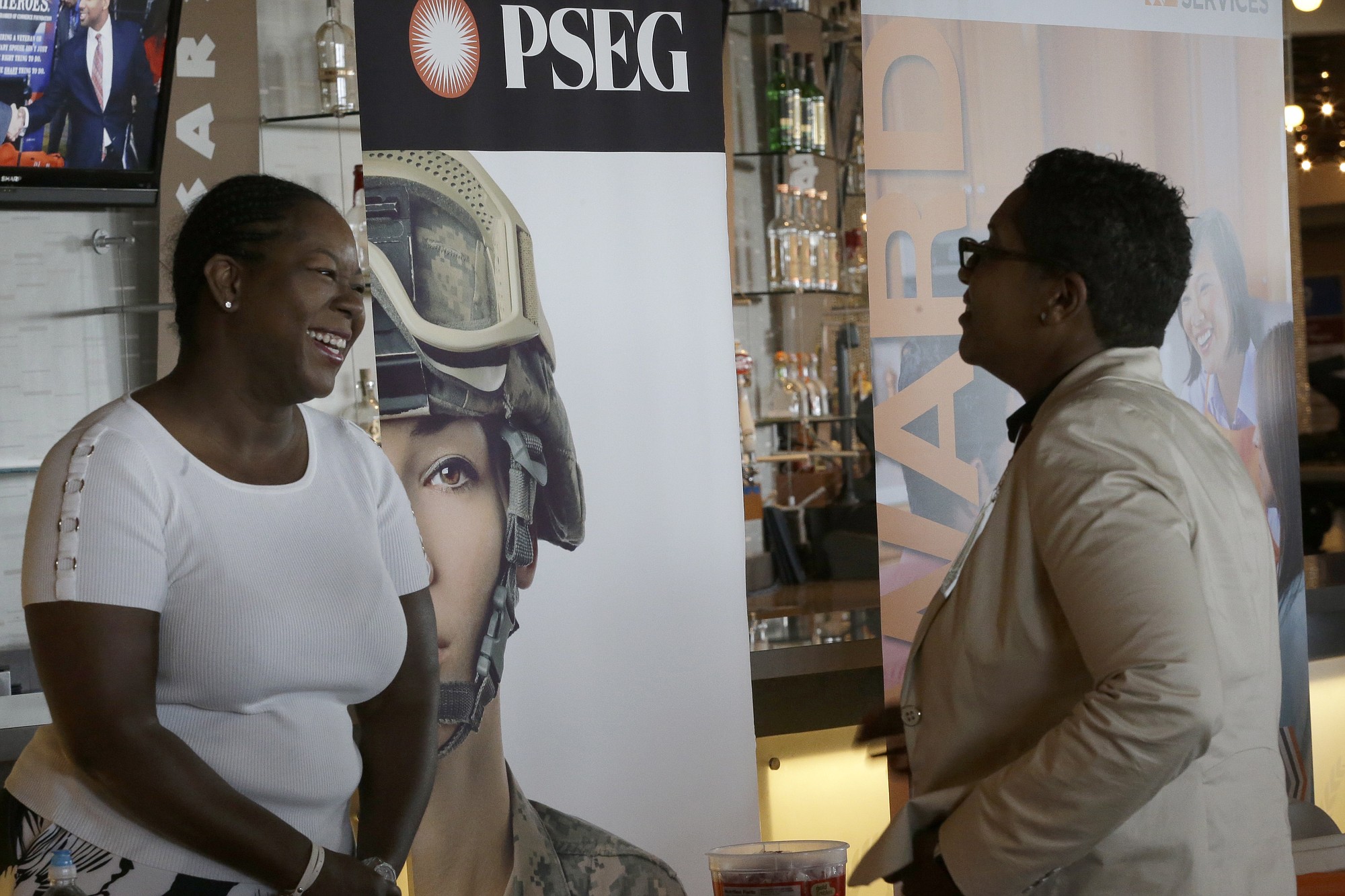WASHINGTON — U.S. unemployment fell to a seven-year low of 5.3 percent and employers hired at a solid pace in June, but other gauges of the job market drew a bleaker picture: A wave of people stopped looking for work, and paychecks failed to budge.
The figures released Thursday capture the persistently uneven nature of the recovery from the Great Recession.
The job market “remains consistent with a two-steps-forward, one-step-back expansion the U.S. economy finds itself in,” said Scott Andersen, chief economist at Bank of the West.
The economy gained 223,000 jobs last month, and unemployment edged down from 5.5 percent in May, the Labor Department reported.
That is the lowest jobless rate since April 2008, when it was 5 percent. It eventually soared to 10 percent in late 2009 after the recession had done its worst.
Yet unemployment dropped this time mainly because many people out of work apparently got discouraged and gave up looking for a job. The government doesn’t count people as unemployed unless they’re actively searching.
In fact, the proportion of Americans working or looking for work slipped to a 38-year low.
At the same time, wages have stalled, rising just 2 percent over the past 12 months.
The mixed data suggest the Federal Reserve may put off plans to raise short-term interest rates and end the stimulus effort that began in 2008. Most economists had expected the Fed to make its move in September.
“After this report, I think it would make sense to wait until December to start that slow rate increase,” said Tara Sinclair, chief economist at the jobs site Indeed and a professor at George Washington University.
A Fed increase would lead to higher rates for mortgages, auto loans and other borrowing.
The sluggish wage growth suggests that many employers see no need to raise pay to attract or retain workers and that there are more people available for hire than the unemployment rate would indicate.
Some quirks of the jobs report might also explain why wages stagnated last month. The government’s survey ended relatively early in the month on June 12. As a result, it might have excluded some twice-monthly paychecks, noted John Silvia, chief economist at Wells Fargo.
Another sour note in the report was that construction companies failed to add any jobs in June. Manufacturing gained just 4,000 positions. But health care added 53,000, and retailers 33,000.
Still, over the past three months, hiring has averaged a robust 221,000 per month. That shows that some employers are confident about consumer demand for their goods and services in the coming months.
Patrick Cimerola, senior vice president of human resources at Choice Hotels, the corporate parent of such chains as Quality Suites and Comfort Inn, said the company is raising pay and adding perks to hire workers in marketing, information technology and finance.
“More people are traveling, because more people have disposable income,” he said. “And we believe that will continue.”
Americans are, in fact, spending more than they did earlier this year, when the miserable winter caused the economy to contract. The Conference Board said this week that consumer confidence reached the second-highest level since the recession.
Auto sales and home sales have jumped to their highest levels since 2007. And the economy is expected to grow at a 2.5 percent annual rate in the second quarter.
Yet Greece’s debt crisis and a slowdown in China could also weigh on U.S. growth this year.



